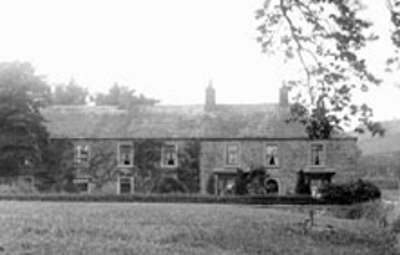
by then it had become known as Dotheboys Hall!
(by permission of Francis Frith Collection)

Following some celebrated court cases in 1823 and Charles Dickens' vilification of him in Nicholas Nickleby, William Shaw became the most notorious of the many country gentlemen who ran cut-price boarding schools in Westmorland and the North Riding of Yorkshire in the early 1800s. Whether or not Shaw deserved his reputation, his court appearances provide insights into life at similar schools, such as Richard Aislabie's Eden Hall Academy in nearby Kirkby Stephen, for which far less information is available.
This article is largely based on adverts for Shaw's school in The Times and coverage of his court appearances in the same newspaper, supplemented by a small amount of genealogical research and trawling of documents held by the Durham Record Office. Mark Ford's introduction and notes for the Penguin Classics edition of Nicholas Nickleby provide further background. Additional information and a defence of Shaw's reputation may be found in a Northern Echo interview with his descendant Ted Shaw and in the comic actor Horatio Lloyd's autobiography, which also seeks to counter Dickens' character assassination. Ted Shaw has also generously provided me with much information from his own very extensive family research.
In reading these old accounts, we need to bear in mind that in the early 19th century living conditions for most people, not just young gentlemen from moderately privileged backgrounds sent off to economical private schools, were harsh, and disease and death were always close at hand. Despite the lurid evidence presented, the judge in the two 1823 trials clearly saw a need to keep things in perspective and actually commented that he had leaned as much as he could to the favourable side on behalf of Mr. Shaw in the trial of yesterday; and he was still of opinion that there was nothing to impeach the general conduct of Mr. Shaw in the management of the school.
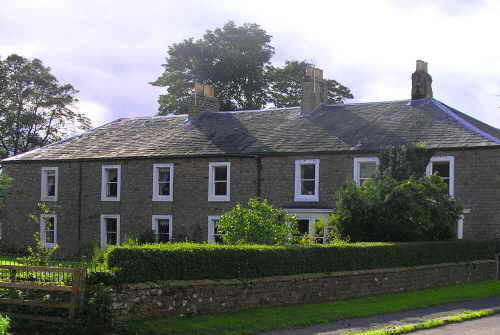
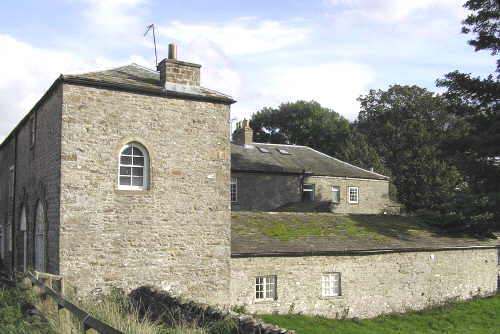
William Shaw was, according to an entry in the Bowes parish registers, a native of London. Whether he had any family connection with the North is unclear. He was born in about 1782 and nothing is known of his early years. In 1810 a draft contract of employment indicates that he probably became an assistant schoolmaster at Bowes Hall Academy, run by George Clarkson. His contract was to last till May 1813 and conferred a salary of £42 per annum with free board and lodging. An interesting clause allowed Shaw at the end of the contract period to remove half the scholars on payment of £5 per head! A typical advert for Clarkson's school (from The Times in 1815) was as follows:
At the end of 1810 Shaw married Bridget Laidman from an affluent Bowes family. In the years that followed he seems to have acquired a considerable portfolio of property (both large and small houses) and land in and around Bowes, presumably drawing on his wife's money. Any teaching position that Shaw undertook with George Clarkson did not last the full term. By 1812 we have a reference to Messers Shaw & Wilson's School, Bowes. Shaw's partner was almost certainly John Wilson, a local Bowes man a few years younger than him and now his brother-in-law: for in 1812 Wilson married Bridget's sister Ann. The partnership did not last long: by 1814 Shaw had become the sole proprietor of his school and by 1819 he was advertising regularly in The Times, hoping like his mentor Clarkson to entice the sons of the metropolis. The first adverts (this one is from 1819), now competing with Clarkson's, were brief and - by the standards of the day - modest:
Shaw's later adverts (this one is from 1823, the year of his court cases) are more characteristic of the genre and owe much of the wording to Clarkson:
The advert has clear selling points for education at Bowes Academy. The flat rate of 20 guineas per annum was amongst the cheapest to be found anywhere and, untypically, also included clothes. (At Richard Aislabie's academy, clothes were merely mended.) The teaching was in both classical and commercial subjects with a view to satisfying middle class pretensions whilst ensuring future job prospects. The common parental wish to be freed of virtually all responsibility for their children was met by the lack of vacations but, if they wished, parents could clearly visit the school (and by inference the school had nothing to hide).
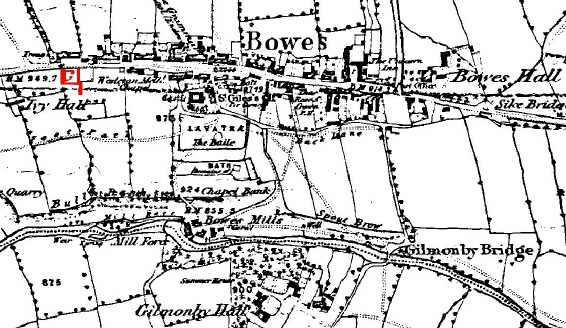
Bowes Academy was located at the western end of Bowes abutting the main road. The surviving buildings (now private accommodation) have a very functional look and none of the charm of some other old buildings and mansions in the area. There have clearly been some changes since Shaw's day, evident if one compares recent photographs with an 1857 map.
Bowes itself was a small village and so adverts for Bowes Academy (and other schools in the area) always mention Greta-bridge. This was an even smaller settlement some six miles away but, crucially, a staging-post (and hence very well known location) on the coach journey from London via Scotch Corner and Brough to Glasgow.
For a sparsely populated place, Bowes was awash with private boarding schools. At the other end of the village from Bowes Academy was Clarkson's Bowes Hall Academy. Across some fields to the South there was Horn's Gilmonby Hall Academy. And the Master of the Free Grammar School in Bowes was also allowed to accept a few boarders.
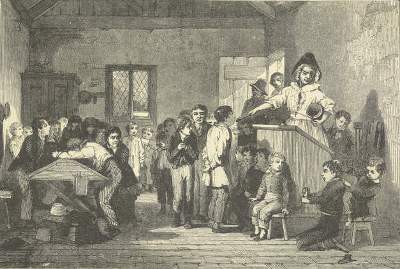
In October 1823 two civil cases were heard before juries at the Guildhall in London. In both cases Shaw was being sued by the parents of boys at his academy for gross negligence leading to injuries to the eyes of the boys. In the first case, which was heard at length, Mr Owen Jones of London, was suing over the state of his son Richard's eyes and the total blindness of his youngest son William. In the second case, which was concluded swiftly, Mr Ockaby was suing in connection with injuries to the eyes of three of his sons.
The Masters Jones went up to Bowes Academy on their own by stage-coach in October 1819 at the age of about 10 and just under 8 respectively. At Christmas in 1820 William had written home, mentioning eye problems. His mother and an elder brother met Shaw in London in January 1821 on one of his regular recruitment visits and to his cost Shaw made light of the children's injuries. The children subsequently returned home in March. Richard's eyes were in a bad state but he was still able to see in day-light or with a strong candle. William, by then barely 9, was totally blind. The plaintiff's case was essentially that the boys had been generally mistreated at the school and had not been given proper medical treatment. The case for the defence was that boys at the school were not mistreated and that William's blindness was possibly the result of an earlier attack of smallpox.
Still only 11, William gave evidence about life at Bowes Academy. As reported in The Times, it was an aweful indictment of Shaw's educational regime:
I was there nine months, and there was nothing the matter with me. One morning I could not write my copy, from the weakness of my eyes: I felt nothing the night before. Mr. Shaw said he would beat me if I did not write my copy. Next morning he sent me into the wash-house. There were other boys there; some quite blind. Mr. Shaw would not have us in his room. I was there a month. There were 18 boys at one time affected; some who were totally blind were sent into a room; I think two besides myself. In about a month I was removed to a private room, where there were nine totally blind. A doctor was sent for. Mr. Benning is his name. I was in the room two months; the doctor discharged me, saying, I had lost one eye, and should preserve the other. I had lost one eye, but I could not see with the other. I was taken back to the washhouse, and never had the doctor again; I was taken home in the month of March.
I was only to learn to read and write. there were boys learning Latin, and two or three French. There were seven ushers. One of the name of Evans was there, for the purpose of instruction. When any of the boys had any thing amiss, Evans assisted them. He had bad eyes. His father used to send him down bottles of stuff from London. Evans used to blow dust in the eyes of the boys who were ill. Mr Benning lives in Barnard Castle. He used to look over the boys' eyes, and turn them away again. He never did any thing else. The boys had no physic nor eye-water. He just came to look at them.
The stones of the wash-house floor were wet. There was a fire in the copper, to boil the potatoes. I was ill six months from October. Mrs. Shaw used to come by, and ask me how I was, and that is all. There was washing every Tuesday or Wednesday morning while I was in the wash-house; they never used to iron the clothes - only made the stiff dry, in the wet weather by the large kitchen-fire. The fire in the copper was only lighted for household business, boiling clothes or potatoes. I was kept in the wash-house from morning till night except for the purpose of meals. When we retired, we slept as many in a bed as when we were well.
William's elder brother Richard, by then about 14, told a similar story and introduced a further woe - the itch (scabies):
I told the master I had the itch: still we all washed in the same trough, and used the same towels - itchy and non-itchy. It was not a running trough. The boys who slept in the bed with me had the itch.
After the Masters Jones had testified (and been cross-examined), three other boys gave corroborating evidence. One mentioned what happened once a quill had been filled with fleas: the quill was thrown into the fire. Three surgeons gave evidence for the plaintiff. There was general agreement amongst them that the boys had received inadequate medical treatment and that conditions at the school (the cold, the damp, want of food, insufficient clothing and lack of cleanliness) were sufficient to have originated or aggravated the opthalmia [inflammation of the eyes]. An eye specialist opined that the complaint yielded readily to early treatment in young subjects and that, if properly applied, there was much advantage to be derived from timely topical applications in the early stages of the disorder.
The case for the defence opened with further medical opinions, first from Henry Benning, a surgeon and apothecary from Barnard Castle, four miles from the school. Keen to defend his own professional competence and diligence, Benning provided extensive information on his ministrations to the boys, for which he had charged over £100 in a twelve-month period. He had directed that the school premises be fumigated and white-washed; the windows were altered so as to admit free air. Benning was complimentary about the school's staff:
Sir William Adams, an eminent but controversial surgeon specialising in treatment of opthalmia, testified that Benning's treatment of the boys was proper and judicious. After the Jones boys had left Bowes, he had been brought in By Shaw at a cost of 300 guineas. The usher mentioned previously as Evans, the son of a medical man, gave evidence under the name of James Powell (presumably his real name) and described the quarantine arrangements:
Unfortunately for Shaw, Powell had written some letters which directly contradicted his evidence. Although he claimed in court that the letters were untrue and had only been written so that his father would let him leave the school, his evidence was undermined. A servant called Catherine Kipling, who had been with Shaw for three years, then testified that the wash-house was a new building to wash the plates in and she had never seen the boys there. She added, equally implausibly: I did never see any one of them itch. I see'd 'em rub, but I never see'd a spot on 'em.. Next to testify was another usher, John Head, who had worked at the school for two years from 1820:
The last major witness was Charles Mackie, Shaw's assistant, who had been with him for six years and was still there:
Mackie also apparently asserted that Shaw had kept the school for 16 years. It is hard to believe this: perhaps he said that Shaw had been a schoolmaster for this period. The case came to a close with a considerable number of healthy boys and their parents testifying as to the general good management of the school, in respect of morals, feeding, clothes and education.
After closing speeches from counsel, the judge summed up the case and the jury withdrew. After only half an hour the jury returned and declared for the plaintiff. Damages of £300 were awarded against Shaw. The next day, Ockaby's case against Shaw in respect of alleged injury to his three sons was heard before the same judge. Within minutes of the case opening, Shaw realised that this case was likely to go against him as well, consented to such a verdict and agreed the same level of damages. As mentioned above, the judge commented that there was nothing to impeach the general conduct of Shaw in the management of the school but in all probability his unaccountable concealment of the calamity from the parents, when the boys were suffering the worst stage of the disease, had founded the verdict.
What are we to make of this case? Some of the evidence on both sides was clearly tainted and yet a reasonably consistent picture of life at Bowes Academy does emerge. Conditions were probably cramped and basic but so they were for much of the population and 20 guineas per annum could not buy much comfort. Interestingly, there was no mention of gratuitous flogging (aside from one reported threat by Shaw). Shaw's principal misfortune was that his school fell prey to what was clearly a highly contagious eye disease. This was probably Egyptian ophthalmia (so named because it was first noted in British soldiers in Egypt some twenty years earlier and now known as trachoma). Better hygiene would have mitigated the extent of the outbreak but quite possibly the way the disease was transmitted was not yet widely understood and quarantining the worst affected boys was seen as the natural response. If, as seems to have been the case, Shaw himself subsequently contracted the disease, then noone was free of risk.
After the court cases, life evidently returned to normal for Shaw and Bowes Academy. The bad publicity did not deter parents and Shaw saw no need to vary the wording in his adverts. Then in 1838 Charles Dickens took a hand. With Nicholas Nickleby in mind, Dickens made his famous visit to the north country in 1838 and met Shaw on 2 February. The novel was serialised between March 1838 and September 1839. There is no doubt that Dickens intended the headmaster Wackford Squeers to be a portrayal of William Shaw; equally, Dotheboys Hall was Bowes Academy. Whether these portrayals were entirely fair is another matter altogether. Dickens had a passionate (or vitriolic) dislike of these northern schools, as he admitted in the preface of the 1848 edition of Nicholas Nickleby:
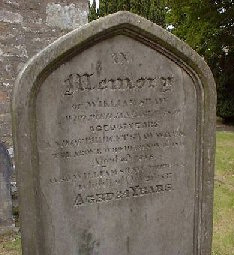
Shaw stood no chance of salvaging his reputation. In the prefaces to both the 1839 and 1848 editions Dickens referred - without mentioning Shaw explicitly - to the earlier court records, thereby heading off any possibility of his being sued by Shaw for libel. This time the bad publicity clearly did take its toll. Shaw's last advert in The Times was in July 1840. By the time of the 1841 census (June 1841) Shaw, still in his late fifties, was no longer a schoolmaster but living with three of his children as a gentleman of independent means. He died in Bowes in 1850 at the age of 67 and was buried in the churchyard.
And what of poor young William Jones? Blind and pock-marked, he was never going to lead the life envisaged for him by his parents. In fact, he lived to a ripe old age in the outer reaches of London. He married twice and had at least one son. However, the early years must have been particularly hard: in 1841 his trade was recorded as licensed hawker (ie street seller), the traditional occupation of Victorian London's blind. William's fortunes may then have improved slightly. He became a musician and we can only hope that his musical career prospered.
> Richard Aislabie's Academy at Eden Hall
> Joshua Walmsley at Eden Hall Academy